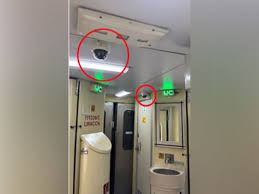Railways to install CCTV cameras in all passenger coaches, locomotives to enhance safety

Indian Railways has launched a major initiative to improve passenger safety by installing CCTV cameras in every coach and locomotive. This decision aims to strengthen onboard surveillance and reduce crime during train travel.
Focus on Nationwide Onboard Security
The new project responds to increasing concerns about theft, harassment, and safety risks on trains. Over 23 million people travel by train every day. With such high numbers, better safety systems have become a priority for the Railways.
Officials confirmed the plan will roll out in phases. Priority will be given to popular trains like Rajdhani and Shatabdi Express. Later, the project will expand to cover all passenger trains, including those in remote areas.
What the Camera Setup Includes
Each passenger coach will get multiple high-definition CCTV cameras. These will be placed at key points—entry and exit doors, aisles, and near seating areas. The goal is to cover all public areas within the coaches.
Officials said each camera will have night vision. The system will store video footage for at least 30 days. If an incident occurs, railway staff can quickly access the relevant video.
Locomotives will also be upgraded. Cameras inside the engine cabin will record driver activity and check for any safety breaches.
Safer Travel for Women
A key goal of this initiative is to make train journeys safer for women. Many women report feeling unsafe, especially during night travel. With CCTV monitoring in place, officials hope to discourage misbehavior.
Future upgrades may include panic buttons linked to the CCTV system. If a passenger presses the button, onboard staff will receive an instant alert.
Budget and Execution
The Railways will use the Nirbhaya Fund and other government programs to pay for this project. The installation of CCTV at stations has already started under the Integrated Security System. This new phase brings the same level of monitoring inside the trains.
Over 6,000 coaches already have CCTV cameras from earlier test runs. Now, Indian Railways plans to install cameras in all 58,000-plus passenger coaches.
How Monitoring Will Work
Only trained Railway Protection Force (RPF) or Government Railway Police (GRP) teams will review the video footage. The Railways will set up control rooms at divisional and zonal offices. These teams will access the recordings only when there’s a security concern or investigation.
Privacy will not be ignored. Officials said no cameras will be placed inside toilets or changing areas. The aim is to protect passengers while respecting their privacy.
Smarter, Safer Trains
This project brings Indian Railways in line with global standards. Many countries already use CCTV cameras on trains to watch for suspicious activity and help during emergencies. The move also supports the Indian government’s push for a smarter digital infrastructure.
Officials may also add facial recognition, AI-powered monitoring, and instant alert systems in the future. These tools could help security teams respond faster and reduce manual monitoring efforts.
How the Public Feels
Regular passengers have welcomed the move. Many say they feel more comfortable knowing someone is watching out for them.
“I often travel at night. Knowing there are cameras in every coach makes me feel safer,” said Priya Sharma, a student traveling from Delhi to Kanpur.
Others have asked whether the footage will really be reviewed. Railway officials said strict rules will guide the monitoring and storage process. They also promised regular maintenance of the equipment to keep it functional.
A Safer Future on Indian Trains
This large-scale CCTV installation marks a big step forward for Indian Railways. With cameras in all coaches and locomotives, the Railways will improve safety and reduce onboard crime.
As India upgrades its public transport, digital safety systems like these play a key role. Features like video monitoring, GPS tracking, and panic alerts build trust in the system. If executed well, this project could make Indian train travel safer, smoother, and more reliable.






